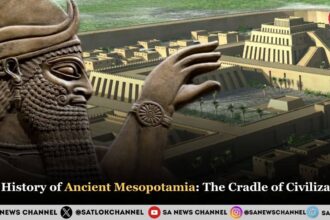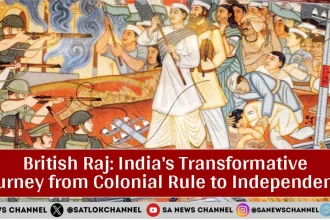The story of the Celts is one of Europe’s most fascinating yet often misunderstood legacies. Long before the rise of powerful empires such as Rome, the Celtic tribes dominated vast regions stretching from the British Isles to Central and Eastern Europe. Known for their warrior culture, intricate artistry, and deep spiritual traditions, the Celts left behind a legacy that continues to shape modern ideas of identity, mythology, and heritage. Exploring ancient celts history within the Celtic world also reveals how religion and ritual played a central role in their daily lives, influencing art, warfare, and community practices.
- Why the Celts Matter in European History
- Overview of Their Cultural Footprint
- Indo-European Roots and Early Settlements
- Archaeological Evidence from Hallstatt and La Tène
- Migration Patterns and Tribal Spread
- Influence in Gaul, Britain, Ireland, and Iberia
- Social Structure of Celtic Tribes
- Religion and Spiritual Beliefs
- Warfare and Military Tactics
- Daily Life in Ancient Celtic Society
- Art and Symbolism
- Language and Oral Traditions
- Law and Governance
- Trade and Economy
- Decline and Roman Assimilation
- Rediscovery and Modern Legacy
- FAQ: Ancient Celts History
Unlike unified empires, the Celts were a collection of tribes linked by language, culture, and shared traditions rather than a single political system. This tribal structure gave them resilience but also made them vulnerable to external conquest, especially during the expansion of the Roman Empire. Yet, despite invasions and assimilation, Celtic traditions endured through oral storytelling, symbolic artwork, and sacred practices.
In this blog, we will take a deep dive into the ancient Celts History, examining their tribal legacy, cultural achievements, and the enduring influence they continue to hold over European history and imagination.
Introduction to Ancient Celts History
The Celts are often remembered as warriors, druids, and keepers of myths, yet their story is much broader and deeply influential in shaping Europe’s cultural and historical foundations. Unlike centralized empires such as Greece or Rome, the Celts were a network of tribes spread across much of Europe. Their shared language, traditions, and art created a cultural identity that endured for centuries. Understanding Ancient Celts History is crucial not only for appreciating their role in the past but also for recognizing how their legacy continues to echo in modern Europe.
Why the Celts Matter in European History
The Celts matter because they represent a bridge between prehistoric tribal societies and the structured civilizations of the ancient world. Long before Rome’s dominance, Celtic tribes flourished in Central and Western Europe, excelling in agriculture, craftsmanship, and warfare. Their resistance against Roman expansion became legendary, and although they were eventually absorbed into the empire, many of their cultural practices survived.
Religion and social organization also underscore their importance. The Celts’ belief system, guided by druids who served as priests, judges, and teachers, revealed a highly organized spiritual and societal structure. Their influence in law, tradition, and cultural symbolism left deep imprints that later European societies inherited. This makes the study of Ancient Celts History essential for anyone seeking to understand Europe’s formative centuries.
Overview of Their Cultural Footprint
The cultural footprint of the Celts is vast and enduring. Their art, with its spirals, knotwork, and intricate metal designs, continues to inspire jewelry, architecture, and modern creative movements. Oral traditions, later written down by Christian monks, gave rise to epics like the tales of Cú Chulainn and King Arthur, legends that still capture imaginations today.
Linguistically, Celtic languages such as Irish, Welsh, and Breton remain as living reminders of this ancient heritage. Even modern festivals, like Halloween, trace their roots back to Celtic seasonal celebrations such as Samhain. These cultural markers highlight that Ancient Celts History is not just a relic of the past but an ongoing influence in European identity.
Origins of the Ancient Celts
The origins of the Celts lie in the broad story of Indo-European migrations and cultural development. Unlike civilizations born in singular city-states, the Celts emerged over centuries through language, technology, and shared customs. Archaeological discoveries in Hallstatt and La Tène provide concrete evidence of their rise and help historians reconstruct the early chapters of Ancient Celts History.
Indo-European Roots and Early Settlements
The Celts were part of the wider Indo-European family, linked linguistically to groups that spread across Eurasia. This connection highlights that the Celts were not isolated but tied into broader cultural exchanges. Their earliest settlements in Central Europe—spanning modern Austria, Germany, and Switzerland—date back to the second millennium BCE. These communities thrived as farmers, traders, and skilled metalworkers.
From their Central European base, Celtic tribes spread outward in waves. They did not form a single empire but developed as independent clans and tribes, united by language and shared traditions. Their mobility and adaptability allowed them to settle in diverse landscapes, from the fertile valleys of Gaul to the rugged hills of Ireland. Such expansion set the stage for the far-reaching impact of Ancient Celts History.
Archaeological Evidence from Hallstatt and La Tène
Two key archaeological cultures define the early Celts: Hallstatt (c. 1200–500 BCE) and La Tène (c. 500 BCE–1st century CE).
- Hallstatt Culture: Centered in Austria, Hallstatt communities grew wealthy through salt mining and trade. Burial sites reveal weapons, ornaments, and imported goods, indicating complex social hierarchies and far-reaching networks.
- La Tène Culture: Emerging later in Switzerland, La Tène marked the artistic and cultural peak of Celtic society. Elaborate metalwork, decorated weapons, and unique art styles illustrate the creativity and sophistication of the Celts at their height.
These cultures are cornerstones of Ancient Celts History, providing tangible evidence of their development, wealth, and influence. They show that the Celts were not merely tribal warriors but creators of complex and vibrant societies.
Celtic Expansion Across Europe
One of the most remarkable features of Celtic history is their vast expansion across the European continent. Unlike imperial conquests, this spread occurred through tribal migrations and the gradual integration of Celtic culture into new lands. The process reshaped Europe’s ethnic and cultural map, leaving behind influences still visible today.
Migration Patterns and Tribal Spread
Between 1000 BCE and 400 BCE, Celtic tribes began migrating from their Central European homeland. Their movements were motivated by population growth, competition for resources, and the search for fertile lands. Some tribes moved westward into France, Spain, and the British Isles, while others pushed eastward into the Balkans and even into Asia Minor, where the Galatians settled in modern-day Turkey.
Also Read: Ancient India: A Complete History from Prehistoric Times to Early Empires
Tribal names such as the Boii and Helvetii were recorded by ancient writers, and their legacies survive in place names like “Bohemia.” These migration patterns reveal the wide geographical impact of Ancient Celts History, stretching from Ireland’s shores to the Mediterranean and beyond.
Influence in Gaul, Britain, Ireland, and Iberia
The Celts left their strongest marks in several regions:
- Gaul (modern France and nearby areas): Gaul became a heartland of Celtic power, with dozens of tribes thriving until Julius Caesar’s conquest. Even under Rome, Celtic traditions endured in rural communities.
- Britain and Ireland: Celtic culture arrived around 600 BCE, flourishing especially in Ireland, which never came under Roman control. Irish mythology, language, and folklore preserved a pure form of Celtic heritage that survives today.
- Iberia (Spain and Portugal): Here, Celts mixed with native Iberians to form the Celtiberians, renowned for their warrior traditions and fortified hilltop settlements. Their resistance to Rome highlighted the Celts’ fierce independence.
These regions demonstrate how Celtic culture was not uniform but adapted to local conditions while retaining a shared identity. The persistence of their languages, art, and traditions underscores the lasting legacy of Ancient Celts History across Europe.
Social Structure of Celtic Tribes
Clan Systems and Tribal Hierarchies
The Celts organized their societies around clans, which formed the backbone of their political and cultural identity. A clan was an extended family unit, bound by kinship and mutual obligations. Several clans together formed a tribe, often led by a chieftain or king. Authority was not absolute; decisions frequently required the approval of councils composed of elders and warriors. This hierarchical yet consultative structure allowed the Celts to remain flexible and adaptive, especially during times of conflict.
Roles of Warriors, Farmers, and Artisans
In Ancient Celts History, the warrior class held immense prestige. Warriors were not only defenders of the tribe but also symbols of honor and status. Alongside them, farmers ensured the survival of the tribe by cultivating grains, rearing livestock, and maintaining a steady food supply. Artisans and craftsmen, skilled in metalwork, weaving, and pottery, played equally vital roles by producing tools, weapons, and decorative objects that became hallmarks of Celtic culture. This tripartite social balance—warriors, farmers, and artisans—was integral to Celtic identity.
Religion and Spiritual Beliefs
Druidism and Sacred Rituals
Religion permeated every aspect of Celtic life. At the center of spiritual practice were the Druids—priests, philosophers, judges, and keepers of tradition. Druids conducted sacred rituals in oak groves, which were considered holy places. They served as intermediaries between humans and the divine, guiding moral, legal, and religious conduct. Rituals often involved sacrifices—sometimes of animals, and according to Roman sources, occasionally of humans—though this remains debated among historians.
Pantheon of Celtic Deities
The Celtic pantheon was vast and regionally diverse. Gods and goddesses embodied natural forces such as rivers, fertility, war, and the underworld. Notable deities included Lugus, associated with skill and craftsmanship; Epona, protector of horses; and Cernunnos, the horned god linked to fertility and nature. Unlike monotheistic religions, Celtic spirituality allowed overlapping worship of local and pan-Celtic deities, reflecting a deeply animistic worldview.
Warfare and Military Tactics
Weapons, Armor, and Chariots
Celtic warriors were renowned across Europe for their ferocity in battle. They used iron swords, spears, and shields, often adorned with intricate designs. Helmets sometimes featured horns or animal motifs, designed to intimidate enemies. Chariots were another striking feature of Celtic warfare, particularly in Britain and Ireland. These vehicles allowed rapid mobility and were employed both as shock weapons and platforms for skilled warriors.
Conflicts with Rome and Other Civilizations
Celtic expansion inevitably brought them into conflict with other powers, most notably the Roman Republic and later the Empire. The sack of Rome by the Senones in 390 BCE demonstrated Celtic military might and left a lasting impression on Roman memory. However, as Rome expanded, it systematically subdued Celtic tribes in Gaul, Iberia, and Britain. Despite their courage, the decentralized nature of Celtic tribes often prevented unified resistance, leading to gradual absorption into the Roman world.
Daily Life in Ancient Celtic Society
Housing, Clothing, and Diet
Everyday life in Ancient Celts History reveals a people deeply connected to their environment. Housing typically consisted of roundhouses made of wood and thatch, designed for warmth and communal living. Clothing was practical yet colorful, with woven wool garments and cloaks fastened by ornate brooches. The Celts enjoyed a diet based on grains like barley and oats, supplemented by meat, dairy, and foraged foods such as berries and nuts. Feasting played a major role in social bonding.
Gender Roles and Family Life
Celtic society afforded women a level of status and autonomy uncommon in many ancient cultures. Women could inherit property, engage in leadership, and, in some accounts, even fight in battle. Family life was structured yet fluid, with kinship bonds extending beyond the nuclear household. These gender dynamics contributed to a social fabric that balanced tradition with adaptability.
Art and Symbolism
Celtic Knotwork and Iconography
Art was a defining feature of Celtic culture. Knotwork, spirals, and geometric motifs adorned everything from jewelry to manuscripts. These intricate designs, often interpreted as symbols of eternity and interconnectedness, remain iconic today.
Metalwork, Pottery, and Jewelry
Celtic artisans were masters of metalwork, producing swords, helmets, and decorative objects that blended utility with beauty. Gold torcs—ornamental neck rings—were symbols of power and prestige. Pottery and ceramics, though less elaborate, displayed functional creativity. This emphasis on craftsmanship demonstrates the Celts’ blend of practicality and artistry.
Language and Oral Traditions
Proto-Celtic and Insular Celtic Languages
The linguistic roots of the Celts trace back to Proto-Celtic, part of the Indo-European family. Over time, this evolved into several branches, including Goidelic (Irish, Scots Gaelic, Manx) and Brythonic (Welsh, Cornish, Breton). These languages carried forward Celtic identity long after their political dominance declined.
Bards, Storytelling, and Early Literature
In the absence of a widespread writing system, oral tradition became the lifeblood of Celtic culture. Bards and storytellers preserved history, myths, and genealogies through poetry and song. Epic cycles such as the Irish Ulster Cycle and Welsh Mabinogion reflect these traditions, blending myth with history in ways that continue to shape European folklore.
Law and Governance
Tribal Councils and Kingship
Celtic governance was neither centralized nor autocratic. Tribal councils composed of elders and warriors shared power with kings or chieftains. Leadership was often based on merit and consensus rather than strict hereditary succession. This system reflected the Celts’ emphasis on communal values and adaptability.
Brehon Law and Legal Customs
In Ireland, the Brehon Laws represent one of the oldest surviving legal systems in Europe. These laws covered everything from property rights and marriage to compensation for injuries. Justice focused less on punishment and more on restitution, embodying a restorative approach to conflict resolution. Such legal traditions illustrate the sophistication of Celtic governance.
Trade and Economy
Agricultural Practices and Craftsmanship
The foundation of Celtic society rested on agriculture. The Celts cultivated barley, oats, wheat, and vegetables, while also raising livestock such as cattle, pigs, and sheep. Seasonal cycles determined planting, harvesting, and communal feasts, highlighting the integration of agriculture into social and religious life.
Craftsmanship was another cornerstone of the Celtic economy. Skilled artisans produced tools, jewelry, weapons, and everyday household items. Ironworking and metal crafting, in particular, reflected both functionality and aesthetic sophistication. The intricacy of torcs, brooches, and ceremonial weapons demonstrates the Celts’ artistic excellence. Such production not only supported local economies but also facilitated trade, reinforcing the cultural richness detailed in Ancient Celts History.
Trade Routes and Economic Exchange
Celtic tribes engaged in extensive trade across Europe, connecting the British Isles, Gaul, Iberia, and Central Europe. Salt, metals, wine, and luxury goods flowed along rivers and overland routes. Hillforts and oppida (fortified settlements) served as commercial hubs, where local produce and imported items were exchanged. This network of trade not only strengthened economic stability but also facilitated cultural diffusion, allowing the spread of artistic styles, religious ideas, and technological innovations.
Decline and Roman Assimilation
Roman Conquest and Cultural Suppression
The rise of Rome marked a turning point in Ancient Celts History. Beginning in the 4th century BCE and continuing through the 1st century CE, Roman legions systematically subdued Celtic territories in Gaul, Iberia, and Britain. While Celtic warriors demonstrated formidable resistance, the decentralized nature of their tribal system made unified defense difficult.
Roman conquest brought cultural suppression as well. Native religious practices, languages, and legal systems were gradually replaced or integrated into Roman frameworks. However, elements of Celtic identity persisted, particularly in rural areas where Roman influence was less pervasive. Despite the loss of political independence, Celtic traditions survived in subtle but enduring ways.
Survival in Ireland, Scotland, and Wales
Not all Celtic lands fell under Roman control. Ireland, Scotland, and parts of Wales remained largely autonomous, preserving language, culture, and religious traditions. These regions became strongholds of Celtic identity, safeguarding myths, legal customs, and linguistic heritage. This survival ensured that Ancient Celts History continued to influence subsequent European societies, laying the foundation for the medieval Celtic world and later cultural revivals.
Rediscovery and Modern Legacy
Archaeological Discoveries
Interest in the Celts surged in the 18th and 19th centuries, driven by archaeological excavations and scholarly research. Sites such as Hallstatt and La Tène provided tangible evidence of ancient settlements, weaponry, and art. Excavated hillforts, burial mounds, and ceremonial artifacts revealed not only the Celts’ technological capabilities but also their social structures and spiritual practices. These discoveries rekindled fascination with Ancient Celts History, inspiring historical and anthropological studies worldwide.
Celtic Revival in Art and Identity
In modern times, the Celtic Revival movement, particularly in the 19th and early 20th centuries, celebrated Celtic art, mythology, and national identity. Artists, writers, and scholars drew inspiration from knotwork designs, epic tales, and folklore. Today, Irish, Scottish, and Welsh cultural festivals, literature, and even popular media continue to echo Celtic motifs. This revival demonstrates that the Celts’ influence extends far beyond their historical era, shaping contemporary European identity and maintaining a vibrant legacy of Ancient Celts History.
FAQ: Ancient Celts History
Q1: What time period did the Ancient Celts live in?
The Ancient Celts emerged around 1200 BCE and remained influential until the Roman conquest in the 1st century CE.
Q2: Were the Celts a unified civilization?
No, they were a network of tribal societies sharing cultural traits but governed independently.
Q3: What language did the Ancient Celts speak?
They spoke various Celtic languages, including Gaulish, Brythonic, and Goidelic dialects.
Q4: What role did Druids play in Celtic society?
Druids were spiritual leaders, judges, and educators, central to religious and legal life.
Q5: Are there modern descendants of the Celts?
Yes, people in Ireland, Scotland, Wales, and Brittany often trace cultural and genetic roots to Celtic ancestors.
Q6: What is the significance of Celtic art?
Celtic art, known for its intricate knotwork and symbolism, reflected spiritual beliefs and tribal identity.
Q7: How did the Romans impact Celtic culture?
Roman conquest led to cultural assimilation, loss of autonomy, and decline of native Celtic traditions.
Q8: What are some famous Celtic archaeological sites?
Sites like Newgrange (Ireland), Maiden Castle (England), and the Glauberg burial mound (Germany) offer insights into Celtic life.









